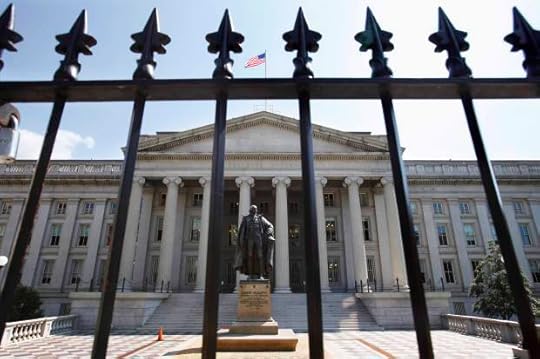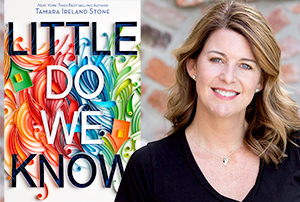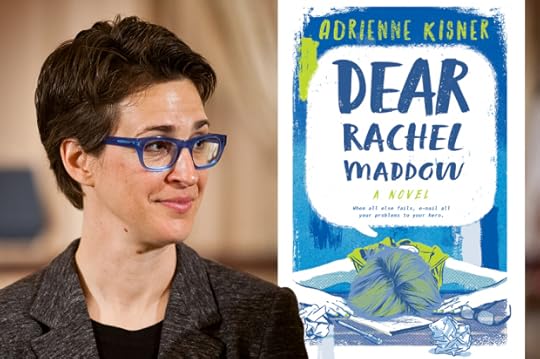Helen H. Moore's Blog, page 54
June 5, 2018
The patented solution for paying off the national debt

AP
This article originally appeared on Truthout.
With the jump in projected deficits due to the Republican tax cuts, the deficit hawks are preparing for a battle the next time Democrats gain control of the White House. We can count on their thoughtful insistence that, however desirable, we can't possibly spend more money on child care, health care, or other neglected areas.
This is why we should get out front and preemptively pay off the national debt even while Republicans still control the government. The path to debt repayment is simple: we sell off patents.
To remind folks, patents are government-granted monopolies. We give them to people and companies, ostensibly to promote innovation. They are tremendously valuable because these monopolies allow companies to charge prices that are far above the free market price.
This is most dramatic in the case of prescription drugs, where patent monopolies can allow companies to charge tens of thousands or even hundreds of thousands of dollars for drugs that would sell for a few hundred dollars in a free market. By my calculations, the gap between patented protected prices and free-market prices comes to more than $380 billion a year in prescription drugs alone.
If we add in the additional costs from patents in medical equipment, chemicals and other areas, as well as costs from copyright protection (especially in software), the amount of money directed by these government-granted monopolies could easily exceed $1 trillion a year or 5 percent of GDP. Selling off monopoly rights that generate an income of $1 trillion a year could certainly get us in the neighborhood of the $15 trillion national debt.
But all of the patent and copyright monopolies we see in the economy today are already owned, so the government would have to invent new ones. This isn't hard.
Suppose the government sold off a patent on making toast. The holder could charge everyone in the country 10 cents for every time they toasted a slice of bread. It can sell off a patent on boiling water or making ice. There is no shortage of items for which the government can issue a patent that it then sells.
Some folks may be bothered by the fact that patents are supposed to be for innovations, but that is often not the case. After all, a company was able to get a patent on a peanut butter and jelly sandwich in 1997, many decades after tens of millions of kids had put the idea into practice.
There is also the idea that these monopolies are supposed to provide incentives, but that could hardly have been the case for the two retroactive extensions of copyright in the last four decades that prolonged Disney's copyright on Mickey Mouse. It's very hard to provide incentives for behavior 95 years in the past.
Some folks may be bothered by the fact that assigning monopolies in this way is incredibly bad economics. After all, why should people be forced to pay money for actions they could otherwise do at no cost. This is incredibly inefficient.
While that claim is true, in Washington, no one considers efficiency when it comes to giving companies like Pfizer and Microsoft longer and stronger patents and copyrights. The idea is to give these companies more money. If that means making cheap drugs incredibly expensive, so what?
People in Washington only care about efficiency when we talk about something like a 10 percent tariff on manufactured goods, which could benefit ordinary workers. In that case, it is very important to highlight the cost to consumers and the economy of paying more due to this tariff. We can ignore a markup of 10,000 percent on lifesaving drugs because that benefits big drug companies.
We also know that the deficit hawk crew is not concerned about measures that could hurt the economy, they just want to reduce the debt. After all, if they cared about the state of the economy that we were passing down to future generations, the deficit hawks would be very troubled by the lasting hit the economy has suffered due to the needless austerity that they pushed back in 2010-2014. By delaying the recovery and needlessly keeping millions out of work, annual output is $1-$2 trillion lower (around $7,000 to $14,000 per family) today.
But the deficit hawks never discuss the damage that austerity has done to the economy, so we can conclude that they are not concerned about the state of the economy, just the size of the national debt. So let's make the deficit hawks happy. Who cares if we have to pay a fee every time we toast a slice of bread or make a cup of coffee, at least we will have paid off the national debt.
Copyright, Truthout. Reprinted with permission.
Top Trending
Check out the major news stories of the day
June 4, 2018
Kanye West reveals he has been diagnosed with a “mental condition”

Getty/Jewel Samad
The cover of Kanye West's latest album "Ye" features a beautiful landscape of mountains with a phrase – "I hate being Bi-Polar its awesome" – scribbled across the center in lime green.
Many fans wondered if this was an admission of an actual medical diagnosis – or just a response to his penchant for rants and social media antics. But, in a new interview with radio personality Big Boy, West revealed a diagnosis he received a year ago, at age 39.
"I had never been diagnosed until I was, like 39 years old," the rapper said, after a listening party for his new CD in Wyoming. West added that he was "diagnosed with a mental condition," which he described on the album and in the interview as a "superpower" instead of a "disability."
He did not specify to Big Boy if he, in fact, was diagnosed with bipolar disorder. But on "Yikes," the sophomore track of "Ye," West ends the song with a testimony: "That’s my bipolar sh*t, n***a what?/ That’s my superpower, n***a. Ain’t no disability. I’m a superhero! I’m a superhero!"
And the chorus of "Yikes" is the somber: "Sh*t can get menacin', frightenin', find help/ Sometimes I scare myself, myself."
In several of the tracks on "Ye," West leans into his now public struggles with mental health, the perils of addiction and even suicide. He mentions artists like Michael Jackson and Prince who suffered – and ultimately died from – similar troubles with prescription drug use.
West's disclosure stands in contrast to what his wife Kim Kardashian West said when the rapper first returned to Twitter earlier this year and endorsed a far-right pundit, professed his love for President Donald Trump and would eventually go on to tell TMZ that slavery was a choice. In an April 25 tweet, she condemned the media for being "so quick to label him as having mental health issues for just being himself."
"Mental Health is no joke and the media needs to stop spitting that out so casually. Bottom line," Kardashian West added in defense of her husband.
To the media trying to demonize my husband let me just say this... your commentary on Kanye being erratic & his tweets being disturbing is actually scary. So quick to label him as having mental health issues for just being himself when he has always been expressive is not fair
— Kim Kardashian West (@KimKardashian) April 25, 2018
Yesterday it was announced that Kanye had parted ways with some business people and media outlets made this about Kanye’s mental health. Rather than just a simple business decision. So I’m glad he tweeted about the state of his company and all of the exciting things happening
— Kim Kardashian West (@KimKardashian) April 25, 2018
He’s a free thinker, is that not allowed in America? Because some of his ideas differ from yours you have to throw in the mental health card? That’s just not fair. He’s actually out of the sunken place when he’s being himself which is very expressive
— Kim Kardashian West (@KimKardashian) April 25, 2018
Mental Health is no joke and the media needs to stop spitting that out so casually. Bottom line
— Kim Kardashian West (@KimKardashian) April 25, 2018
West told Big Boy that he "completely redid the album after TMZ," when he said the inflammatory, offensive comments about slavery sounding like a choice. And there is a line on the track "Wouldn't Leave" where he mentions the controversy ("I said, 'Slavery a choice' — they said, 'How, 'Ye?'/ Just imagine if they caught me on a wild day"). West added that he "took a bar off the album" that delved deeper into the issue, because "it was just too sensitive."
"I'm so blessed and so privileged," West continued. "Think about people that have mental issues that are not Kanye West, that can’t go and make that [an album] and make it feel like it’s all good. Think about somebody that does exactly what I did at TMZ, and they just do that at work. But, then, Tuesday morning they come in, and they lost their job.
"That’s why God put that on me at age 40," he said, of his mental condition.
West also addressed the album title, explaining, "I believe 'Ye' is the most commonly used word in the Bible. And, in the Bible, it means 'you'. So, I’m you. I’m us. It’s us. It went from being 'Kanye,' which means the only one to just 'Ye'. . . The album is just more of a reflection of who we are."
Gold rush opportunists, hippie goat ladies: California entrepreneurs dream of cheese

This article was originally published on The Conversation.
The idea for Humboldt Fog goat’s milk cheese first came to Mary Keehn in a dream. She fell asleep on an airplane and awoke with a vivid picture in her mind of how the cheese looked. And then she set out to realize her vision — in the process, helping to launch a late-20th-century American renaissance in artisan cheese-making.
But the dream didn’t come from nowhere. In Keehn’s telling, the revelation occurred on a transatlantic flight home from France, where she’d gone in 1992 as a young cheese-maker looking for new inspiration by tasting traditional French cheeses and visiting their makers. Indeed, a wheel of Humboldt Fog melds elements of two iconic French cheeses, with a Morbier-like ribbon of ash running through chalky paste more reminiscent of a soft-ripened Valançay. The result is thoroughly distinct.
The story of Keehn’s Cypress Grove Cheese is a quintessential telling of the California dream. Not merely an entrepreneurial success story, it is a narrative of self-reinvention. The California dream is about moving west (or, as in Keehn’s case, farther north, to Humboldt County from Sonoma) to start anew, seeking not so much to get rich quick as to envision and inhabit a new identity. Cypress Grove’s heroine embodies characteristics that could describe the American artisan cheese industry as a whole: scrappy, innovative and unapologetically indebted to European tastes and know-how — condensing themes that emerged through anthropological research I conducted across the United States for my book, “The Life of Cheese.”
A day in the life of Humboldt Fog.
Back to the land, making cheese
Mary Keehn acquired her first goats in 1970, wanting to feed fresh goat’s milk to her first daughter, whom she was herself then weaning. For years, Keehn and her family lived as self-sufficiently as possible. Overwhelmed with more goat’s milk than her human companions could or were willing to drink, she began experimenting in her kitchen and learned to make fresh cheese, or chèvre.
A friend who was opening a restaurant told Keehn, now a divorced mother of four, “If you start a [licensed] cheese factory, I’ll buy your cheese.” And in 1983 — without any official training, apprenticeship or business experience beyond selling her goats’ breed stock _ Keehn launched Cypress Grove. For nine years, prior to the trip to France and subsequent introduction of Humboldt Fog, Cypress Grove sold fresh chèvre and fromage blanc, cheeses more wholesome than gourmet.
Indeed, Keehn was one of a number of Americans involved in the back-to-the-land movement who, in the early ‘80s, began making cheese by hand for commercial sale. Located in the Northern California coastal town of Arcata, Keehn grew Cypress Grove into a successful business with national distribution and name recognition that employs over 40 workers — a far cry from its modest origins. In 2010, Keehn sold the company to the Swiss corporation Emmi, although her daily involvement continues.
Today’s cheese lovers can drive (or internet browse) along the California Cheese Trail, stretching from Crescent City near the Oregon border south to Los Angeles. It leads to artisan microdairies as well as Kraft Foods subsidiaries. Created in 2010 by a Marin County dairy farmer’s daughter on the model of wine-tasting maps, the California Cheese Trail today features 72 cheese-making operations. Nationwide, the American Cheese Society counts more than 900 artisan and specialty cheese operations.
Reflective of the state’s cultural diversity, the variety in California cheese-making is neither new nor unique to the state. But it is indicative of how food-making traditions in the United States are often animated by personal narratives of innovation rather than, as in Europe, adherence to customary tradition.
Since 2000, the number of California’s artisan cheese producers has grown exponentially. But while hippie goat ladies have been celebrated as cheese-making pioneers, they are not without precedent. The California dream of a century earlier saw a similar flourishing of cheese-making activity in port cities up and down the Pacific Coast.
Gold rush roots for new cheese markets
The Marin French Cheese Company, in Petaluma, California, claims to be the oldest continuously operating cheese factory in the United States. In 1865, with Lincoln in the White House and the Civil War coming to an end, Marin French (originally Thompson Brothers Cheese Co.) got its start when Jefferson Thompson, a dairy farmer, recognized an emergent market niche in the nearby port town of San Francisco.
The now late Jim Boyce, who purchased Marin French in 1998 from Thompson’s descendants, related the company’s history to me in the course of my own research. During the California Gold Rush between 1849 and 1855, European stevedores who sailed into what’s now called San Francisco Bay delivering goods to support the mining enterprises got “caught up in the fever” themselves. Many abandoned ship to seek their own fortunes mining.
After the gold rush went bust, workers returned to the bay to make a living at the dockyards. As Boyce said to me, “Now, in any workman’s bar or inn… the beer gives them hydration and carbohydrate but no protein,” so “typically in a workman’s bar there’s a jar of pickled eggs or something like that – pig knuckles, sausage.” But in the Bay Area at that time agriculture had yet to be fully developed. “There weren’t any eggs,” Boyce explained, as there were no commercial hen farms. So according to Boyce, enterprising dairy farmer Jefferson Thompson said to himself:
“in a moment of marketing brilliance, ‘I wonder if they’d eat cheese, instead?’ So he starts making these little cheeses, three-ounce cheeses, more or less. And he hauls them off to the docks, and they put them on the table in a bowl, and they were an immediate hit! Why? Because these are European stevedores: They knew cheese! They ate it breakfast, lunch and dinner. And that was the origin of the company.”
With new migrants come new tastes
If Mary Keehn’s Humboldt Fog exemplifies personal insight and passion, Jefferson Thompson’s Breakfast Cheese (now Marin French’s Petite Breakfast) celebrates the generation of new markets. It’s a reminder that the California dream of entrepreneurial reinvention requires not only creative genius but also the appreciative taste of willing consumers.
The Gold Rush brought European deckhands eager to eat soft-ripened cheeses. Marin French was at the ready, hand-ladling Camembert. In the late-20th century, hippie eaters of “health foods” gave way to American Europhiles who valued a diversity of distinctive tastes.
Here it is worth remembering that California, nearly all the up way to present-day Arcata, was until 1848 part of Mexico. Cross-cutting immigrant histories have long underwritten the California dream — and they still do.
The California Cheese Trail declares Ariza Cheese, established in 1970, to be “the oldest artisan Mexican cheese-maker in Southern California.” It specializes in Salvadoran cheeses in addition to crumbly Mexican Cotija. You will find Ariza just off Alondra Blvd. in the city of Paramont, east of Compton in LA County.
In 2015, four of the company’s long-term employees — immigrants from Mexico and El Salvador — purchased the company with the aid of Concerned Capital, a social benefit corporation that invests in low- to moderate-income communities by helping to transfer business ownership to workers.
In 21st-century narratives of new beginnings are echoes of earlier immigrant worlds. Dreams upon dreams — while consumers continue to savor California cheeses with wide-ranging inspirations.
Heather Paxson, Professor of Anthropology, Massachusetts Institute of Technology
Top Trending
Check out the major news stories of the day
“I should be the poster boy for the #MeToo movement,” Woody Allen recommends

AP/Matt Sayles
Woody Allen has come under serious fire ever since the #MeToo movement resurfaced the 25-year-old allegation that the Academy Award winner sexually assaulted his adopted daughter, Dylan Farrow. Allen has denied the claim, and for decades it has had little impact on his reputation.
But, in the era of #MeToo, accusations of sexual violence committed by powerful men are being reexamined with a new fervor – and an understanding that misconduct could still have taken place even if an alleged assault was not reported by a victim or did not result in a conviction.
In a recent interview with the Argentinian news program Periodismo Para Todos, Allen was asked about the decades-old claim – and whether there was any truth to it.
"Of course not, this is just so crazy," the director and screenwriter replied. "This is something that has been thoroughly looked at 25 years ago by all the authorities, and everybody came to the conclusion that it was untrue. And that was the end, and I’ve gone on with my life. For it to come back now, I mean, my God, it’s a terrible thing to accuse a person of. I’m a man with a family and my own children. Of course, it's upsetting."
In recent months, several actors have expressed regret for working with Allen in the aftermath of some of Hollywood's elite being exposed as sexual predators.
"I think in any situation where anyone is accused of something unjustly, this is a sad thing. I think everybody would agree with that. Everyone wants justice to be done," Allen said. "Like the #MeToo movement now, you root for them. You want them to bring to justice these terrible harassers, these people that do all these terrible things. I think that's a good thing."
While Allen said he is very supportive of the #MeToo movement, it pains him that he is lumped in with people like Harvey Weinstein and others accused of sexual misconduct by scores of women. He reiterated that his only accusation was "by one woman in a child custody case, which was looked at and proven to be untrue." Although, this is not entirely accurate.
"As I say, I’m a big advocate of the #MeToo movement," Allen continued. "I feel when they find people who harass innocent women and men, it’s a good thing that they’re exposing them. But you know . . . it's funny. I should be the poster boy for the #MeToo movement, because I have worked in movies for 50 years. I’ve worked with hundreds of actresses, hundreds and not a single one – big ones, famous ones, ones starting out – have ever, ever – not a single one – ever suggested any kind of impropriety at all. I’ve always had a wonderful record with them."
In regards to representation, Allen added that he has created "wonderful roles for many women," while dozens of women who've starred in his films have gone on to be nominated for prestigious awards. He also claimed that he has employed hundreds of women behind the scenes on the crew for his films, who were compensated equal to their male counterparts.
Allen's family has been visibly divided over the allegation. Mia Farrow, Allen's ex-partner, and her son, Ronan Farrow, have stood behind Dylan Farrow since she first disclosed the alleged encounter in 1992. But, Allen's adopted son, Moses Farrow, has come to defend his father in recent years. Last month, Moses wrote a lengthy blogpost, which accused Farrow of "brainwashing" and abusive behavior. It repeated many of Allen's talking points – that the claim was investigated and dismissed, and that this was a lone accusation in a long career.
Allen's forthcoming film, a romantic comedy titled "A Rainy Day in New York," currently has no release date, and stars Timothée Chalamet, Selena Gomez and Rebecca Hall said they have donated their salaries to various charities.
Vermont’s plan to pay people to move there went viral — but don’t believe the hype

Getty Images
Vermont wants telecommute workers to call the Green Mountain State home — so badly that the state is willing to cover their moving expenses, and then some.
As you have probably heard by now, last week Republican Governor Phil Scott signed a bill into law, S. 94, that would pay remote workers up to $10,000 to move to the state. The news went viral, trended on Facebook, and was covered by nearly every major news outlet.
Tired of South Carolina heat and traffic? Officials in Vermont are willing to pay new residents up to $10,000. https://t.co/jkAOhT5ExT
— FOX 24 News (@FOX24Charleston) June 3, 2018
At cursory glance, perhaps the brouhaha is understandable. Who doesn't want "free" money? Policymakers of a picturesque state with rolling green hills will pay you to move there. In a political era characterized by austerity, it's more unusual.
Yet as it turns out, all that glitters is not made of candied maple syrup.
The new initiative, called the New Remote Worker Grant Program, makes $125,000 available in 2019 for new remote workers. The fiscal budget will increase in 2020 to $250,000, and then return to $125,000 in 2021. If deemed to be eligible for the grant, the remote worker cannot receive more than $5,000 per year, or exceed a total of $10,000. Keeping this in mind, in 2019, no more than 25 people can receive this grant.
The qualifying stipulations are a little restricting, too. According to the legislation, a new remote worker is “is a full-time employee of a business with its domicile or primary place of business outside Vermont.” The new remote worker must also become a full-time state resident on or after January 1, 2019 and work mostly remotely or from a co-working space located in Vermont.
The purpose, according to the legislation, is “to respond to the growth needs of Vermont small businesses with 20 or fewer employees by funding innovative strategies that accelerate small business growth and meet the project criteria specified in this section.” While that jargon is vague, it could be simply an initiative to enable people to live in rural Vermont towns, where small local businesses are looking for new customers.
William Frey, a demographer at the Brookings Institution, told Salon the scale at which this grant program is happening suggests it is likely a “low-cost experiment.”
“It is an interesting and intriguing idea, to get 12 or more people to Vermont, test if they stay there, or see who will come as a result of this,” Frey said.
Frey added if it works, they could ramp up the funding of the program in the next few years, which would increase the taxbase of the state. It is also an alternative to recruiting employers.
“In a rural area, a company is not going to move there, but people might,” he added.
The idea has also been positioned as a way to find a creative solution to the state’s growing aging population. According to a report by the Vermont Housing Finance Agency, 24 percent of the state’s population will be 65 or older by 2030; a 13 percent increase from 2006. The report interestingly noted that as the cost of living in an assisted living residence is also increasing in the state.
“This reality raises many questions and concerns about how Vermont can achieve smart and safe growth to accommodate the affordable housing needs of its aging population,” the report stated.
Keeping this in mind, one might wonder why the state is focusing on bringing new remote workers to the state, instead of allocating funds to assist its aging population—or lower income state residents.
Frey told Salon considering the low annual budget, it likely would not make a big impact on vulnerable communities, but it is worth considering if the money could be best spent elsewhere.
“The most important thing for the state is that the end of one or two years, they take a serious look at whether or not it has legs and is something they should continue,” he said.
Darrell West, the author of “The Future of Work” and the vice president and director of Governance Studies at the Brookings Institution, told Salon in an email that the idea likely reflects a greater shift the U.S. will see in its work style.
“The law is a sign of how work is transforming,” he wrote. “With high-speed broadband, people can work remotely from any location. Technology can liberate employees to work from a variety of different places. It is just as easy for them to work from Vermont as Silicon Valley or Manhattan.”
He added that as technology becomes more ubiquitous, others states might follow Vermont’s lead.
Still, it is important to remember how small this pot of money is, given that only 25 workers will benefit. In other words, don't pack your coats and scarves just yet.
EPA administrator Scott Pruitt allegedly asked his aide to buy an “old mattress” from a Trump hotel

AP/Andrew Harnik
An aide to embattled EPA administrator Scott Pruitt was reportedly asked to acquire an "old mattress" from the Trump International Hotel.
The aide, Millan Hupp, served as Pruitt's director of scheduling and advance, the Washington Post reports.
In testimony with Democrats on the House Oversight Committee released Monday, Hupp said she performed an array of personal tasks for the administrator, including booking travel, visiting rental properties and trying to purchase a used hotel mattress.
According to a partial interview transcript released Monday by House Democrats, Hupp said she recalls conversations with Pruitt about "the possibility of securing an old mattress from the Trump Hotel." She reached out to the managing director at the Trump International Hotel in Washington via email in September 2017.
"If Ms. Hupp's statements to the Committee are accurate, Administrator Pruitt crossed a very clear line and must be held accountable," wrote Reps. Elijah Cummings (D-MD) and Gerry Connolly (D-VA), the top two Democrats on the committee.
Pruitt did not obtain the mattress, and Hupp told committee staff that she was not involved in furnishing Pruitt's residence beyond the mattress request.
It is not entirely clear what the former Oklahoma politician, who has already come under intense scrutiny for spending taxpayer dollars on first-class travel, enlisting round-the-clock security detail and spending $43,000 for a private phone booth, had planned to do with the used mattress.
The new details of the tasks Pruitt allegedly assigned his staff were revealed during an investigation into the administrator that is being conducted by the House Oversight and Government Reform Committee.
"We are working diligently with Chairman Gowdy and are in full cooperation in providing the Committee with the necessary documents, travel vouchers, receipts and witnesses to his inquiries," said EPA spokesman Jahan Wilcox, per CNN.
House Oversight Committee spokeswoman Amanda Gonzalez said in a statement that the panel "has conducted several transcribed interviews and obtained 2,350 pages of documents as part of our investigation into mismanagement and spending at the EPA."
"This month, the Committee will interview additional witnesses and receive additional document productions," she added, according to the network.
Gonzalez criticized Democrats for including portions of Hupp's interview in their letter.
"Selectively releasing portions of witness interview transcripts damages the credibility of our investigation and discourages future witnesses from coming forward," Gonzalez said in a statement. "The Committee will continue conducting a serious, fact-driven investigation, and therefore will wait until the conclusion of our investigation to release our findings."
The embattled EPA chief has managed to hold onto his job despite the ethical entanglements that have colored his time in office, likely because he has rolled back several environmental regulations enacted by former President Barack Obama and lifted policy decisions that hurt fossil fuel and mining interests, with whom President Donald Trump's administration enjoys a cozy relationship.
In April, Trump tweeted that Pruitt "is doing a great job but is TOTALLY under siege" by the news media.
Do you believe that the Fake News Media is pushing hard on a story that I am going to replace A.G. Jeff Sessions with EPA Chief Scott Pruitt, who is doing a great job but is TOTALLY under siege? Do people really believe this stuff? So much of the media is dishonest and corrupt!
— Donald J. Trump (@realDonaldTrump) April 6, 2018
It was revealed just last week that Pruitt spent more than $1,500 for a dozen custom pens bearing his signature.
When asked about the controversy Monday, EPA spokesman Jahan Wilcox told the Washington Post in an email, "We are working diligently with Chairman Gowdy and are in full cooperation in providing the Committee with the necessary documents, travel vouchers, receipts and witnesses to his inquiries."
Grandma Cookies: Getting creative with this season’s “low grade” maple syrup

Getty/Shutterstock/Salon
No two Grandma Cookies look alike. In some, walnut clusters pile atop gooey blobs of chocolate, while others look more like a collection of oats held together by thin sheets of cookie dough. All of them are chewy, almost fold-‘em-around-your-finger chewy, and carry a hint of maple flavor.
Grandma Cookies got their name because my grandma made them. Unlike any other cookie I’d previously eaten, Grandma Cookies had a gummy hardness, often because my grandma had refrigerated them before I arrived at her house in Springfield, New Hampshire to devour them five at a time. Eating them was fun. They were like toys for my mouth, perfectly complimented by my grandparents’ collection of windup animals that could accompany you in the bath.
As a kid, I wasn’t interested in the ingredients of Grandma Cookies other than the clearly visible parts — the thick chocolate cubes, walnuts that my grandma cracked herself because “she was too cheap to buy them shelled,” according to my father. Only recently did I learn of the key role of maple syrup in the recipe.
In the 1960s through ‘70s, my grandparents tapped the many sugar maples that dotted their property. They lived at the end of Sugar House Road in a home they built themselves, with the help of my father, uncle, and aunt. Their neighbors, a couple, lived in the sugar house on Sugar House Road and ran a small commercial sugaring operation. In their spare time, my grandparents worked for the couple, letting them tap trees on their property, putting up tap lines for collecting sap, and gathering wood for the fire that would evaporate the sap’s water, leaving the syrup behind.
In return, the couple paid my grandparents in Grade C syrup. Back then, syrup came in four grades. “Fancy syrup,” Grade A, and Grade B were all commercial. Grade C, the darkest brown with the strongest maple flavor, was not. My grandparents’ many jars of Grade C syrup lasted them well beyond the end of tapping season in late March/early April, and they needed something to do with the excess. So my grandma came up with recipes — for “pecan pie” (that was actually filled with walnuts, not pecans), sweet salmon glaze, and Grandma Cookies.
Since then, Grade C syrup has come into vogue. Now known as “Grade A: Very Dark & Strong Flavor” and boiled toward the end of sugaring season, it has found its place in the Master Cleanse besides lemon juice, cayenne pepper, water, and laxatives. Many drizzle it on their pancakes.
Previously, “fancy” syrup had earned its place at the top of the maple pyramid because its light color and mild flavor most closely resembled cane sugar, an expensive product that people in the Northern US and Canada had to import from the South. “Fancy” maple syrup was the poor woman’s sugar. Now, people desire darker syrup’s maple-heavy flavor because it’s strong and distinct.
My grandparents stopped sugaring in the 1970s because the couple that operated the sugar house got divorced. The trees on my grandparents’ Springfield property remained untapped for decades, until my brother, Alexander, a tall, skinny arborist with an aquiline nose, decided to give it a go this past sugaring season.
With his friend Ben, who towers over my brother and wears colorful sweaters, Alexander traveled from Massachusetts to Springfield during the third week of February. The temperature had just climbed above freezing, the perfect time to set up for tapping season.
“First, we went out on a walk and scoped out all the sugar maples,” Alexander told me, noting their Latin name, Acer saccharum (meaning sugary, like saccharine). Behind my grandparents’ old house, now owned by father, there’s a large swath of woods with a hill on their property. Alexander and Ben climbed through mud and snow to pick out which maples they would tap. Then they drilled holes in the chosen sugar maples and hammered in the taps, or spiles. From the spiles, they hung what looked like colostomy bags but were designed specifically for collecting sap. At the top of each two-gallon bag, a metal ring with a hole slotted neatly into the dripping spiles. When it was warm enough, a bit above freezing, the sap ran freely into the bags.
In mid-March, I traveled from New York to Springfield to help with the sugaring. It was warm (over 40 degrees) and sunny when I arrived, and the bags were heavy with clear sap. My father and a friend of Ben’s, who bakes bread in Vermont, also joined us to collect the bags, pour them into five-gallon jugs, and lug them down the hill and over to a shed by the house where they’d set up the evaporator. An approximately four-foot-long, two-foot-wide metal vat with a partition in the middle and drains on either side, the evaporator houses the sap over a wood fire for hours until it boils down to a light brown liquid.
For every 40 gallons of sap, you yield one gallon of syrup. The boiling process takes hours. Thus, the bulk of my syrup-making time took place in a wooden shed with a newly gouged hole in the roof (to let the steam out), drinking beer and playing Up and Down the River, a card game involving bidding and trumping. At one point, we ventured back up the hill and into the woods to grab more firewood from a house my aunt built with a Buddhist monk several decades ago, dragging the wood back down to the evaporator on a rickety, old Flexible Flyer.
Once most of the water had evaporated, we drained the remaining, light brown sap into a couple of large pots to finish boiling on the stove indoors. We boiled it for too long. That batch of sap produced a honey-like mixture that crystallized over time, which Alexander remedied by adding more water and re-boiling.
While in “honey” form, the batch served us well. It stayed firmly in the grooves of our waffles and, easily spreadable, proved a welcome addition to a peanut butter sandwich. We also learned firsthand how longer boiling leads to thicker, sugary treats. When whisked, with the addition of a thin pat of butter, it formed the creamy-but-crumbly maple candies you’ll find in Vermont souvenir shops, often in the shape of tiny maple leaves. Alexander had purchased a rubber mold shaped like the state of New Hampshire. Amateur candy-makers, our confections ended up looking more like drip sand castles. Regardless, they melted on our tongues.
Darren, a New Hampshire neighbor from whom my brother bought his evaporator, uses vacuum tubing to maximize the amount of sap he gets from each tree. His commercial operation includes about 1,800 taps, connected through a network of lateral tubing lines that run into a black, plastic main line, which empties out into a single container. This eliminates the repeated lugging that Alexander and Ben had to perform throughout the season. In addition to boiling sap over a wood fire, Darren also uses a reverse osmosis (RO) machine to separate the water in the sap from the sugar. “Sugaring is the only industry that uses the waste product off an RO,” Darren told me over the phone. “We use the machine backwards to any other industry . . . but as the expression goes, that’s dumb farmers for ya.”
As a kid, Darren collected sap in a contraption he called a “scoop.” He hitched the scoop behind his family’s horses and oxen to ride around their sugar orchard, gathering buckets full of the barely sweet, transparent liquid one-by-one. Their evaporator was a “revamped” washtub.
Both technological innovations and climate change have increased the value of the US’s maple sugaring industry. In 2016, US maple syrup production value exceeded $147 million, up from around $125 million the year before. In most states, the average season length has increased. Nationwide, the average sugaring season lasted 26 days in 2015. It spanned 37 days last year.
“When I was younger, in the ‘70s, my folks wouldn’t start tapping until after town meeting, which was the second Tuesday in March,” said Darren. “This year, we boiled for the first time on the 21 of February . . . if you waited until town meeting time to tap, you missed two thirds of the season.” He harvested the rest of his crop during the end of March and the first couple weeks of April. “We ended up making just about 30 percent more this year than we normally make.”
My brother didn’t stick around for the last few weeks of the season. Right after I left New Hampshire, a snowstorm hit. Unable to tap the trees (the sap freezes when it’s below 32 degrees), they grew restless and drove down to New York to be around other people and eat good Chinese food. With them, they brought several bell jars and emptied beer bottles full of syrup. Three of them remain in my fridge. Like my grandma decades earlier, I felt the need to get creative with my supply. Having grown tired of drenching my Eggo waffles, I called my uncle and get the recipe for Grandma Cookies.
Turns out, you can find the recipe for Grandma Cookies on the back of the Quaker Oats box. Just instead of using sugar, substitute maple syrup, and, of course, add ample chocolate chips and walnuts (preferably ones you crack yourself). These changes make all the difference, creating the exact, chewy consistency I remember from my grandma’s frequently made dessert.
Here’s the recipe. I kept the dark brown sugar because I love brown sugar, but substituted the ½ cup granulated sugar with a little over a ½ cup maple syrup — just a little. I’d recommend Grade A: Very Dark & Strong Flavor. Instead of using Quaker Oats, I used house brand “old fashioned rolled oats” from from the regional grocery, Key Food which are a dollar cheaper. Feel free to add chocolate chips and walnuts in liberal quantities — a couple big handfuls each should do it.
Ingredients
1/2 Cup (1 stick) plus 6 tablespoons butter, softened
3/4 Cup firmly packed brown sugar
1/2 Cup Grade A: Very Dark & Strong Flavor.
2 Eggs
1 Teaspoon vanilla
1-1/2 Cups all-purpose flour
1 Teaspoon Baking Soda
1 Teaspoon ground cinnamon
1/2 Teaspoon salt (optional)
3 Cups old fashioned rolled oats
1 Cup (or more) chocolate chips and walnuts
Method
Heat oven to 350°F. In large bowl, beat butter and sugars on medium speed of electric mixer until creamy. Add eggs and vanilla; beat well. Add combined flour, baking soda, cinnamon and salt; mix well. Add oats and raisins; mix well. Drop dough by rounded tablespoonfuls onto ungreased cookie sheets. Bake 8 to 10 minutes or until light golden brown. Cool 1 minute on cookie sheets; remove to wire rack.
When placing the cookies on your baking sheet, avoid rolling them into neat, little balls. Instead, let the dough fall as it may. It’s important that every Grandma Cookie is a different shape and size. The recipe makes close to 40.
After baking and cooling, store in the refrigerator. When you take one out to eat it the next morning (I made mine at night), you should find that it’s sticky to the touch and can bend a bit before breaking. The cold exterior should give away easily to a soft inside full of textured surprises — the almost meaty crunch of a walnut, the silky peel of milk chocolate. Unlike I did as a child, pay attention to the maple flavor, and think about the work, the technology, and the climate that went into making it.
Top Trending
Check out the top news stories here!
Stop thinking you need to have all the answers: Knowing what you don’t know is more important

Getty/RapidEye
I was 25 when I learned about the circles.
It was early in my business career and I was presenting to a big group of people in a packed conference room, when somebody asked a question I didn’t know how to answer. Rather than admit I didn’t know, I came up with something on the fly. Like most people who tend to do this, I thought I was better at it than I actually was.

The meeting ended, the room cleared, and as I was gathering my things, a woman on my team scooted her chair closer. I’d always respected her. She was funny, wise and kind. “I’d like to show you something,” she said, “and I hope you don’t take it the wrong way.” I promised I wouldn’t.
She opened her notebook to a blank page and drew a small circle. “This is what we know,” she said. She drew a slightly larger circle around the smaller one. “This is what we know we don’t know.” And then she drew a gigantic circle around the other two. “And this is what we don’t know we don’t know.”
She looked up at me, waiting to see if I understood. Or maybe she was checking to be sure I wasn’t offended. “No one expects you to have all the answers,” she said gently.
It was enlightening. And oh, so humbling.
There was so much I didn’t know, and even more that I didn’t know I didn’t know. And for maybe the first time in my professional life, someone told me that was OK.
Her words and those three circles left a huge impression on me. It took time and practice, but I got better at saying “I don’t know,” especially when it felt awkward and uncomfortable. After a while, I found those words to be pretty powerful in the business world. I started to enjoy looking people right in the eye and saying, “I don’t know, but I’ll find out.” The truth always sounds better.
But then that deep-seated desire to know everything returned in an unexpected way.
During my first pregnancy, I decided I needed to know how to be a mother. I read every book there was on the topic. Not kidding. Every. Book. I was standing in a bookstore, picking out more new parenting books, when I went into labor. I had so much to learn and, God, I hated that. I had to know.
In those first precious weeks of my son’s life, rather than figuring out motherhood as I went along, I read. One night, my husband came home to find me in tears, cradling a crying baby with one hand and holding a book that told me how to keep said baby from crying in the other one. I was a mess.
He told me he loved me, and that because he loved me, he was taking away my books. And then he took my hands in his and said, “You’re not supposed to know how to do all of this.”
It was enlightening. And oh, so humbling.
It brought back the memory of those three circles. There was so much I didn’t know, and even more that I didn’t know I didn’t know. Once again, I needed someone to tell me that was okay.
Over the years, “I don’t know” has become a powerful tool as a parent. Turns out, like the people I worked with, my kids don’t expect me to have all the answers either. I’m grateful for all those moments of not knowing, because we get to learn new things together.
But one night, my son tested my ability to speak those three words in a way I’ll never forget. He’s a big thinker with lots of questions, and he tends to ask them as I tuck him in at night, when the world is quiet and dark. “What happens to us when we die?” he asked.
I’d always assumed I’d answer that question the same way my parents had: Heaven. I’d grown up in a Christian family, going to church twice on Sunday and every Wednesday night. I sang in the youth choir and could recite the books of the Bible by heart. But a quest to better understand my faith had changed my perspective over time. At one point, I knew that answer. But in that moment, I couldn’t honestly say I did.
I answered him with those three words that used to scare me: “I don’t know.”
Keeping it simple for my eleven-year-old, I told him that some people believe in heaven, or paradise. Other people believe in reincarnation. Some believe that this life is all we have, and others believe that something about our soul — the part of us that laughs and loves — carries on in a way we can't even imagine. I explained that there are lots of different answers to that question, because lots of people believe lots of different things, but no one really knows for sure.
“If you think about it,” I said, “that’s pretty cool, because you get to decide what you believe.” I turned the question back to him. “What do you think happens when we die?”
We talked for a long time that night. Our conversation was enlightening. And oh, so humbling.
It brought back the memory of those three circles. There was so much I didn’t know, and even more that I didn’t know I didn’t know. And that night, I let that be OK.
I’ve thought a lot about those circles as I’ve written my new novel, "Little Do We Know." It’s a story about two teen girls, a skeptic and a believer, working to repair their broken friendship with help from a boy who has just come face-to-face with death.
It’s about figuring out what you believe, and accepting — not simply tolerating — all points of view when it comes to life’s greatest mystery, because none of them are right and none of them are wrong.
I write for young adults because I love the way they see the world. They’re big thinkers. They question everything. They’re not satisfied with the status quo — just look at what the Parkland kids are doing to change the world. Our teens are seeking answers, and when adults don’t have honest ones, they need us to say, I don’t know, but I’ll be there to support you while you figure it out for yourself. I believe they need books that tell them that, too.
I decided to write "Little Do We Know" to help me figure out what I think and believe. Here’s where I landed: I don’t know.
I do know that every second of this life is precious. I know I’m here to love deeply and to make the world a better place in whatever ways I can. I know I’ve had an impact on some people who are going to miss me when I’m gone. I could probably come up with other things that live in my smallest circle, but it’s a pretty short list. It always will be. Because when it comes down to it, there’s very little I know.
And I’m completely OK with that.
Advice from “Unfiltered Mom”
Parenting tips to laugh more, worry less
In “Dear Rachel Maddow,” the MSNBC anchor becomes a fictional teen’s muse

Getty/MacMillan
High school can be hell. It's certainly a torrent of problems for Brynn Harper, the heroine of author Adrienne Kisner's sad, funny, wise — and already widely acclaimed — debut young adult novel. Facing grief, academic challenges, a troubled home life and the rejection of her first girlfriend, a class assignment becomes a lifeline, and a television icon turns into an unlikely beacon of hope.
Salon spoke recently to Kisner about "Dear Rachel Maddow," dangerous owls and finding your family of choice.
I loved your book. It also gave me many feelings and I cried a lot, so thanks.
I've read that you started the idea for this ten years ago when you had your first baby. You thought that someone should write "A Dear Mr. Henshaw" but for Rachel Maddow. The world has changed a lot in the past decade, Adrienne. I'm curious how you've evolved this book that you've spent so long with, and how it changed while you've been watching the world change.
I religiously watched Rachel Maddow. It debuted when my daughter debuted. It seemed to always be on. My daughter just never slept; she liked to scream. But she was calmed by bouncing on a yoga ball. That's it, that's the only thing that would work. We used to have really good cable — I live in a college campus so we had this amazing cable. I would always watch "Women Behind Bars," because that was reliably on between 12:00 and 4:00 am. Then our cable changed and I was devastated because we lost the WE Network, and so really only infomercials were on and I didn't really have the mental capacity to focus on anything.
When Rachel's show came on, I feel like they replayed it. My memory is little murky, so this all might be hallucination. It was always new, even though it replayed, because I had no short term memory at that point. She was just so soothing and friendly, like, “All right little baby, we will watch this woman. Look, look at how successful she is!” As the show went on, it was different than it is now. Now very rarely is there a "best new thing in the world." These little quirks of the show, I basically had to take out because they're a remnant of a simpler time.
There was a time when there was an owl — the owl still might be there in Oregon — who would swoop down and like try to get people, and her staff designed a sign warning people about this swooping owl. There's just nothing like that anymore. Now it's Russia, Russia, Russia, collusion, here's this crazy thing that happened in news. It's a different experience watching the show. She still goes back and she still explains the news from history, but it's much more breaking news. Before it had a laid-back feel and now it's, "Well, this is our reality. I want to tell you about it because it's a big deal."
It's like Code Blue all day, every day.
Exactly. Even early on she'd be like, "It was a big day in the news" and I'd always say, "You say that every day." But now you can tell because there's no filler. They don't have these little things that would fill the time because there's just no time to fill.
I think sometimes we need five minutes to think about an owl attack, please. That would be great. That would be amazing.
Putting this in the context of our ridiculous current news cycle, this is also a book that feels in many ways really a timeless coming of age story. I know that "Dear Mr. Henshaw" was the template that you moved from this epistolary tale. Someone going into it seeing Rachel Maddow's name on the cover might not know what they're getting into is really about this girl. It's her story and about her imaginary sounding board for her thoughts and feelings during this year-long period in her life.
I think the books for me come from the character. Initially, one of the earliest drafts of this book was really a rip-off of "Dear Mr. Henshaw." I was going to fictionalize Rachel Maddow, but in my mind I'm like, "You know what? No one's ever going to read this. I'll do whatever I want. Who cares?” Then it got out of hand. I’m like, "Oh well, I just wrote a book to Rachel Maddow. It's out there in the world and it's separate from the reality of her."
Brynn, the character, was inspired randomly by Twitter. Someone had tweeted that a lot of YA books have people who aspire to go to Juilliard and Harvard and do these grand things. Often at the end of the story, they succeed. Where are the books for people who really aren't on that kind of path, who aren't aspiring to this? I thought, "You're right, that's a thing, I should write that book." You know, you don't have to be a genius to be a thinking, feeling person.
Brynn is very smart, in my experience. It's interesting to see readers interpret her because she struggles academically. Some reviewers have said that she has dyslexia, and that might be true. My experience in learning challenges has always been in the "not otherwise specified" realm, where there are clear challenges, but there's this diagnostic criteria that you don't fall into. You're in this murky realm, and that's where I envisioned Brynn. She's getting the help at school but she's not necessarily on this path towards academic greatness. That isn't what she really wants.
In terms of all my characters, they tend to lose. That is where I feel in my comfort zone. You want all these great things and you're probably not going to get them. But I went to a wonderful MFA program and there they drill into your head that you have to figure out what your character really wants. I do hope that my people in the book figure out what they want and maybe get it.
For a great majority of us, as we're looking around and comparing ourselves to everybody around us, sometimes it's just about being able to survive. Brynn survives and her brother did not. A big part of her triumph is that she is able to get her education, she is able to learn, she is able to grow. She is able to do all these other things. Life's not just about those kind of things that you can tick off in a box that are the metrics of success.
She struggles with deserving to make it. There are people who will make it regardless of what they do, and they just have the deck stacked in their favor. But something intrinsic to her character is she can't stop herself from caring. She desperately wants to stop, but she just can't. What compels her to do most of the stuff that she does is the spark within her that really should have been extinguished but just can't, because that's who she is.
She connects with readers, because she is a person who, despite the evidence of her life, has hope.
There are all these compelling reasons to not to. I wouldn't blame her if she did. In writing the book, earlier she had few allies. I couldn't figure out what wasn't working. Why would she bother caring? There's nothing going right. That's where her crew evolved. Then she did have people rooting for her, which is important as well. Her found family really made it for her, I think, in the end. You do need people, even if it's not the people that you want or expect to be in your corner. Having people in your corner makes all the difference.
It's about finding your family of choice. I’ve got to give you all the credit in the world because you really aimed high with this book in terms of, I'm going to write about LGBTQ issues, I'm going to write about learning issues, I'm going to write about grief, drug abuse, family abuse, bullying, shame.
I did not go into it with any of that. All I wanted to do was, "Hey, there's this chick who writes to Rachel Maddow!"
The only thing that I really remind myself in writing is that I usually write about teenagers. They aren't going to make the best choices all the time. I am inclined to make them pretty happy and maybe they go out to dinner and then they're in love and it's great. And then I have to go back and fix it. I don't want to do bad things to people. But then when you let your characters be who they are, they aren't going to make these choices. Who Brynn is and how she got where she is, is because of all this stuff. It just emerged. At times I was reading over like, "Wow, poor Brynn. I just want to give you a hug."
This is important because this is not fanciful. This is not too much, this is not over the top. This is very much a book about issues that kids are facing. It's really important to identify that kids don't just get one issue. It's not just, "Oh, I'm the gay teen and I'm the kid with the learning issue and I'm the kid who's grieving for a family member." Sometimes you're all of those things. I also really love teenagers and I think they're the most interesting human beings.
I live amongst them; they keep my dialogue young. Sometimes in my darker moments I think I will rip off Shirley Jackson's ‘We Have Always Lived in the Castle" and my version would be "We Have Always Lived In the Dorm."
The past several months, we've watched this rising generation of activists, this generation of kids who are different. They are responding to the world in a different way and they are looking at these issues, not just about violence and gun control, but gender, harassment, online bullying, sexuality, in a different context. They have different frames of reference than people who are even ten years older than they are. I'm wondering how you write to that and how you write to a voice of a generation that is unique.
These kids have to deal with the reality that if they go to school, they might get shot. It's real and it's heightened. It's closer now, because there's more information to be had and it's very, very accessible. And you can wield it with little oversight.
I went into this thinking, I exist now and I existed as a teen at one point — what would I have wanted to hear then? Who would I want to read about? What would I have wanted to hear encourage me in this crazy world? Because though it is different, there's always war, there's always mean people. They find new ways to come at you and to use the tools available to them. It's more about writing authentic characters who try to navigate whatever is thrown at them. Maybe they come out on top, maybe they don't, but what do you do with that? I would hope that's the kind of writing I'm crafting. And if that connects with this generation of involved, passionate, amazing kids, then I am humbled that I was able to do that.
This conversation has been condensed and lightly edited for clarity.
Why adults love YA
The trials of teens have a timeless resonance
Sex workers say “trafficking” crackdown is backdoor to gentrifying New Orleans

Getty/microgen
This article originally appeared in In These Times

Under the guise of protecting sex trafficking victims, the Louisiana legislature passed two bills this month that — if signed into law by the governor — will continue to unfairly link human trafficking to New Orleans strip clubs and sex workers. Some sex workers warn the legislation is poised to harm the safety and livelihood of sex workers and quicken the pace of gentrification in the city.
HB 830 would require “sexually oriented businesses,” which includes strip clubs, to adhere to requirements that employees fill out questionnaires on human trafficking or face thousands of dollars’ worth of fines. Another bill, SB 335, bumps up fines for those soliciting sex workers and paying for sex to “lessen the demand” for sex trafficking — while failing to distinguish between trafficking victims and sex workers in its enforcement.
Many had already expressed concern about an unfair crackdown targeting sex workers. In February, strip club employees, community activists and other workers in the French Quarter took to the streets to protest police raids on strip clubs. Police claimed that they were combatting human trafficking by raiding the establishments, but many strippers say the clubs were unfairly targeted and that police took photos of them without asking, watched them dress and ridiculed them.
Strip clubs avoided additional city scrutiny when, in March, the City Council voted down a proposal to cap the number of strip clubs on Bourbon Street, which represented a huge victory for strippers, who are concerned about attempts to make the French Quarter more “family friendly.” But state lawmakers have continued to advance sex trafficking laws that — according to some — would enable the gentrification of New Orleans, make it more difficult for strip clubs to stay open and endanger sex workers.
State and city officials and lawmakers have tried to make strip clubs synonymous with sex trafficking — and police raids over the years have certainly helped. During have reduced sex trafficking.
According to Jack, the hardest-hit clubs include those that employ dancers from more marginalized backgrounds, some of whom are excluded from the formal economy. Many of the clubs that were shut down as a result of ongoing city scrutiny were the ones that “tended to have dancers that were not just pretty white girls,” he explained.
“There was a club called Dixie Divas that was known as place where trans women would go, and a lot more women of color, and not normatively attractive bodies to go dance and make some money,” he says.
The club closed in February after the Louisiana Office of Alcohol and Tobacco Control, Louisiana State Police and New Orleans Police Department found “multiple incidents of prostitution, lewd acts, and in some cases illegal drug activity at these strip clubs.” There were no arrests related to human trafficking.
Lyn Archer, who is part of the strip club worker advocacy group Bourbon Alliance of Responsible Entertainers (BARE), tells In These Times she has concerns about the City Planning Commission’s 2016 Adult Live Performance Venues study, which considered the regulation of strip clubs. Archer says that the smaller clubs won't be able to meet the zoning standards for appearance or reputation that they need to stay open. Since these clubs hire more people who don’t conform to narrow weight or age or height expectations that larger clubs do, those workers will likely lose their jobs if the clubs close.



